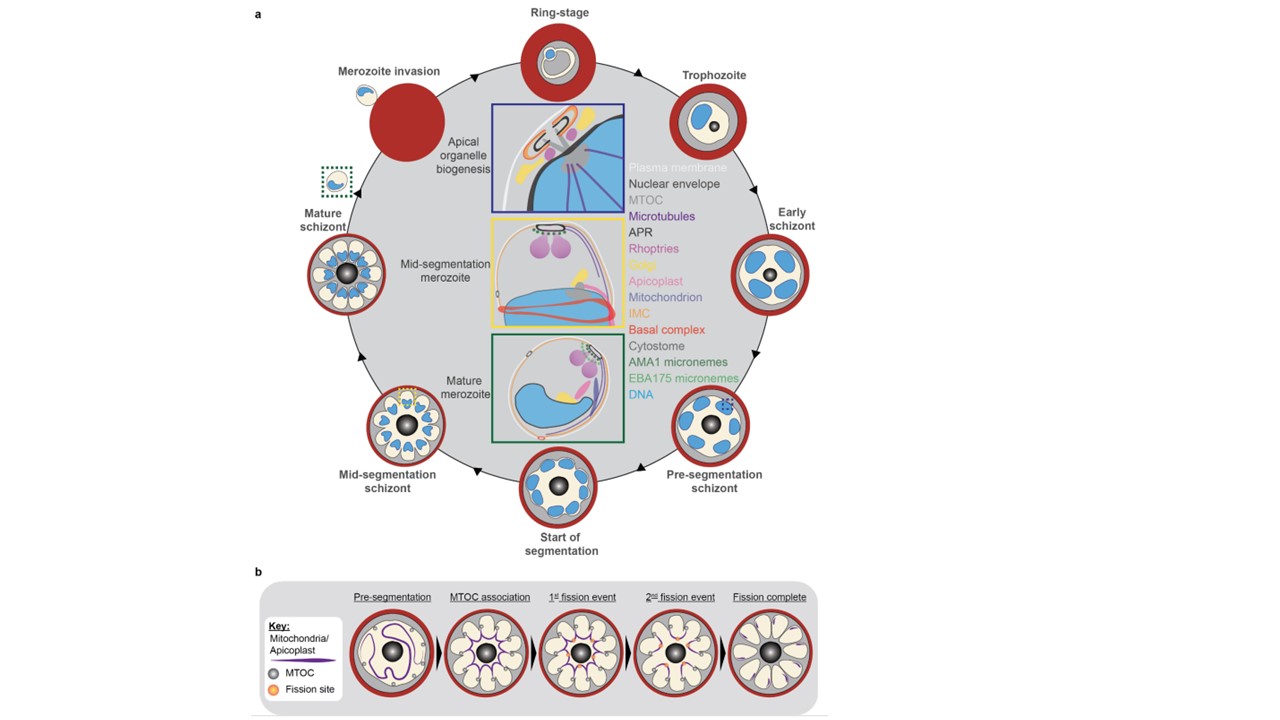(a) Apical organelle biogenesis: Biogenesis of the rhoptries, Golgi, basal complex, and apical polar rings occur at the cytoplasmic extensions of the nuclear MTOC, between the nuclear envelope and parasite plasma membrane. Duplication and segregation of these organelles appears to be tied to MTOC duplication and segregation following nuclear divison. Mid-segmentation merozoite: The rhoptry neck is distinguishable from the bulb, and AMA1-positive micronemes are present at the apical end of the forming merozoite. Each merozoite has inherited a cytostome. Subpellicular microtubules stretch the entire distance from the apical polar rings and the basal complex. The apicoplast has attached to the nuclear MTOC and begun fission. Mature merozoite: The parasite has completed segmentation, and each merozoite contains a full suite of organelles. The nuclear MTOC is no longer visible, and EBA175-positive micronemes are both visible and separate from AMA1-positive micronemes. (b) Model for fission of the mitochondrion and apicoplast. Prior to fission, both the apicoplast and mitochondrion branch throughout the parasite cytoplasm, before associating with the MTOC of each forming merozoite. For the apicoplast, this occurs during the final mitosis, but not until late in segmentation for the mitochondrion. Following MTOC association, the apicoplast and mitochondrion undergo a first fission event, which leaves an apicoplast and mitochondrion shared between forming merozoite pairs. Subsequently both organelles undergo a second fission event, leaving each forming merozoite with a single apicoplast and mitochondrion.
Liffner B, Cepeda Diaz AK, Blauwkamp J, Anaguano D, Frölich S, Muralidharan V, Wilson DW, Dvorin J, Absalon S. Atlas of Plasmodium falciparum intraerythrocytic development using expansion microscopy. bioRxiv [Preprint]. 2023 Mar 24:2023.03.22.533773. PMID: 36993606
